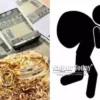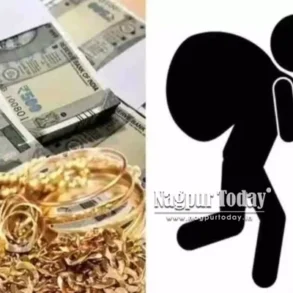Last week, Marjorie Stewart Joyner was posthumously inducted into to the National Inventors Hall of Fame (NIHF). Joyner invented the permanent wave machine in the 1920s.
Marjorie Stewart Joyner
After being denied entry into white beauty organization sponsored contests, Joyner started professional organizations for the Back beauty industry. By the age of 20 Joyner became the first Back student to graduate from Chicago’s A.B. Moler Beauty and Culture School in 1916.
In 1928, Joyner patented the permanent wave machine. Traditionally a laborious curl-by-curl procedure, in creating a machine the process became more efficient. Joyner was inspired by the long thin rods used in holding and heating pot roast. She adapted the rods for use as rollers by fastening 16 rods to a hair dryer hood, creating a device that achieved the same results of multiple, simultaneously used curling irons.
A beautician, salon worker, and insturctor as wall as an executive for the Madam C.J. Walker Co. Joyner helped pave the way for Black-owned brands and businesses in the beauty industry.
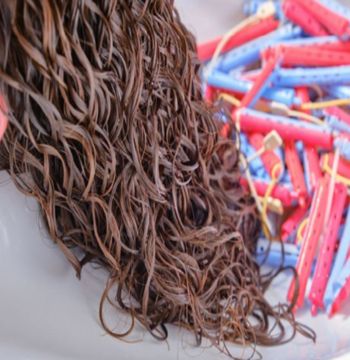
Traditionally a laborious curl-by-curl procedure, in creating a machine the process became more efficient. Joyner adapted the rods for use as rollers by fastening 16 rods to a hair dryer hood, paving the way to modern perms.
Joyner also advocated for civil rights and was a founding member of the National Council of Negro Women in 1935. Joyner sued the Burlington Rock Island Railroad in December 1937, after being forced to ride next in the baggage car next to a filled coffin, to which she was paid a settlement in 1938. She also helped lead a center in Chicago providing supplies to Black soldiers during World War II.
She was a founder or co-founder for both the United Beauty School Owners and Teachers Association, Alpha Chi Pi Omega Sorority and Fraternity, and the National Culturist’s League.
Throughout her life, Joyner received four awards for her permanent wave patent and her accomplishments.
Household & Personal Care Industry Reps in the NIHF
There are many other NIHF inductees who have made an impact in personal and household care industries; they are:
Joseph Muhler and William Nebergall
Both Muhler and Nebergall were posthumously inducted in 2019 with a patent for their stannous fluoride toothpaste (US Patent No. 3,445,567).
While as an undergrad in the early 1940’s Joseph Muhler began studying fluoride, tooth decay and their relation. Working with his professor Harry Day at Indiana University, and ab inorganic chemist (William Nebergall,) they began research that resulted in a stannous fluoride cavity-preventing product.
The original research began in 1940s and showed that tooth enamel hardened and became resistant to attack from fluoride ions. It was then established that stannous fluoride was most effective in hardening and protecting tooth enamel.
When Nebergall joined the research team in 1950, he worked on producing high-purity stannous fluoride and compatible abrasives. This resulted in three related patented compounds.
In 1956 this product was nationally sold as Crest toothpaste, which was the first toothpaste to be recognized by the American Dental Association in 1960 as an effective decay-preventing agent.
Proctor & Gamble Co. began funding Muhler’s research and in 1955 the stannous fluoride formulation was licensed to Proctor & Gamble in a limited test market.
This debut inspired manufacturers to create their own fluoride formulations. As a result, fluoride toothpastes were used nationwide and is credited as a significant factor in the decline of cavities in the late 1970s.
To this day, to receive the ADA Seal of Acceptance, toothpastes must contain fluoride.

The additon of fluoride in toothpastes nationwide is credited as a significant factor in the decline of cavities in the late 1970s, effectivly changing how we clean our teeth.
Allene Jeanes
Posthumously inducted in 2017, Allene Jeanes helped pave the way towards modern dentistry with her discovery and production of Xanthomonas campestris from xanthan gum (US Patent No. 3,000,790).
Jeanes and her colleagues successfully produced xanthan gum from Xanthomonas campestris, a microbial gum that could be produced domestically. Jeanes discovered the polysaccharide synthesized from bacteria called xanthan gum.
Xanthan gum was approved by the FDA in 1968 and used as a food thickener, emulsifier and stabilizer. It is still widely found in toothpaste and across the cosmetics industry.
Jeanes worked in carbohydrate chemistry at the US Department of Agriculture’s Northern Reginal Research Lab and was one of the first women involved in the field of organic chemistry in 1838. She was also the first women the receive the USDA Distinguished Service Award, and in 1962 John F. Kennedy presented her with the Federal Woman’s Service Award.
King Camp Gillette
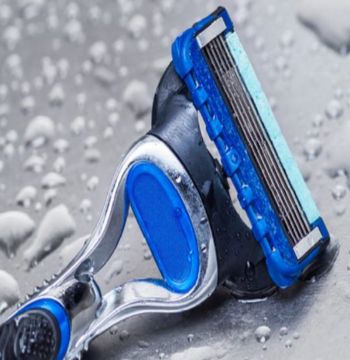
The modern razors of today trace their history back to King Camp Gilette’s disposable safety razor (US Patent No. 775,134). He was inducted posthumously into the NIHF in 2007.
In 2007, King Camp Gillette was posthumously inducted for developing the disposable safety razor (US Patent No. 775,134) that changed men’s personal care and safe home shaving.
Rather than using an expensive razor that had to be sharpened with each use, Gillette searched to create an inexpensive, convenient, disposable product. After struggling for years for a way to make a thin blade, William Nickerson helped to improve Gillette’s product.
The thin blades were crafted from thin pieces of metal that were honed, grinded, sharpened, and hardened by Nickerson’s machine.
In 1903 Gillette established American Safety Razor Company as a forerunner to the Gillette Company. During World War I the Gillette razor became standard issue for US soldiers, and by 1926 the Gillette Company produced 2.1 million blades a day.
Since then, Gillette razors have evolved to become a daily convince for many men and women.
Today, Gillette is part of Procter & Gamble.
Josephine Garis Cochran
Posthumously inducted in 2006, Cochran invented the first practical dishwasher (US Patent No. 355,139), forming the Garis-Cochran Dish-Washing Company which manufactured and marketed her invention.
Cochran found that hand washing often resulted in chipped plate ware and set out to design a washing device to mitigate that. She designed a set of wire compartments that fit plates, cups or saucers, which was then placed inside a wheel that laid flat inside a copper boiler. A motor turned the wheel and pumped hot soapy water that was stored in the bottom of the boiler.
Showcased in the World Columbian Exposition of 1893, this machine helped establish a market for dishwashers in large restaurants and hotels.
However, since most homes could not supply the amount of hot water needed for the dishwasher, the machine was not popular in domestic space. In the late 1950s, once hot water availability increased in homes dishwashers became popular with the general public.
In 1949 the Garis-Cochran Manufacturing Company became part of Kitchen Aid and the company’s first dishwasher was introduced to the public based off Cochran’s design. Today the dishwasher is a standard appliance in most homes.
R. Rox Anderson
Inducted in 2022 (US Patent No. 5,595,568) for groundbreaking laser technology, Anderson created a solution for removing skin lesions, scars, and birthmarks. His technology also provided solutions for permanent hair removal, acne treatment, and tattoo removal.
In 1980, Anderson worked with colleague John Parrish and the Candela Corp. to develop the first commercialized pulsed dye laser from SP (selective photothermolysis) to successful address port wine stains. This became an alternative to argon laser treatments as well as the bases for many other dermatological laser treatments.
Anderson also developed fractional photothermolysis (FP) with his colleague Dieter Manstein. The procedure uses microscopic laser beams that initiates natural wound healing that rehabilitates raised scars with no additional scarring. The two also invented and developed selective cryolipolysis which is a popular noninvasive alterative to liposuction that uses cold to selectively remove unwanted body fat.
Anderson co-founded Olivo Labs, R2 Dermatology, Cytrellis, Seven Oaks Biosystems, and Follica, as well as established medical laser treatment facilities in serval other countries, including Armenia, China, Russia, and Vietnam.
He is currently the Lancer Endowed Chair in Dermatology in Massachusetts General Hospital where he practices dermatology, and he teaches at MIT and Harvard.
Anderson also serves on the editorial board for many journals such as the Journal of Investigative Dermatology, Journal for the American Academy of Dermatology, Lasers in Surgery and Medicine, and the Journal of Cutaneous Laser Therapy. He is also a member of seven medicinal societies including the American Hair Research Society, American Medical Association, the Dermatology Foundation, American Society for Laser Medicine and Surgery and more.
Patsy O. Sherman and Samuel Smith
Sherman and Smith were posthumously inducted to the NIHF in 2001 (US Patent No. 3,574,791) for their Scotchgard Textile Protector.
While working at the 3M Company, Patsy Sherman and Samuel Smith created Scotchgard, which when to become one of the most widely used stain repellency products.
After an accidental spill of fluorochemical rubber which showed a resistance to water and oily liquid, Sherman and Smith developed the line of Scotchgard products. The tow later developed clothing, household linen, upholstery, and carpeting products once a stain repellent treatment for wool became available in 1956.
In the late 1960s their research culminated with the development of the Scotchgard textile protector finish family of products that repelled stains as well as permitted the removal of oily substances from synthetic fabrics.
Sumita Mitura
A chemist at 3M Oral Care, Sumita Mitura was inducted in 2018 with three patents (6,730,156; 6,572,693; 6,387,981). In the late 1990s, Mitra invented the first dental filling material to include nanoparticles, called Filtek Supreme Universal Restorative.
This new tooth filler material mimicked the appearance of natural teeth, could be used for teeth anywhere in the mouth, has better polish retention, and contained mechanical strength and wear-resistance than existing dental composites.
Mitra and a team combined nanomeric and nanoclustered filer particles to create a composite system with great paste handling properties. When cured they found the material to have superior optical properties for long and short term. With its lasting properties, Mira found it had a strong ability to withstand fracture and had low shrinkage during curing.
Mitra’s tooth colored composite preserves more of the patients’ natural tooth structure and withstands health and environmental concerns that come with amalgam fillings that contain mercury. Flitek Supreme provides the attractiveness wanted for front teeth and is strong enough for molars and other high-pressure teeth.
In 2002 the first generation of Filtek Supreme Restorative was launched followed by the second generation in 2005. 3M Oral Care launched the third generation called Filtek Supreme Ultra in 2012. Since then, the Filtek Supreme line of products have been commercially successful.
Mitra’s tooth filler has led to breakthroughs in dental technologies including nanocomposites, dental adhesives and resin-modified glass ionomers.
In 2010 with more than 30 years with 3M, Mitra retired and currently runs a self-stared chemical consulting agency.
James Murry Spangler
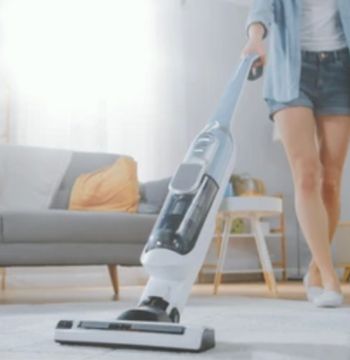
Today’s sleek and robotic vacuums can be traced back to James Murry Spangler’s suction sweeper patent (889,823).
Spangler was posthumously inducted in 2006 for his invention: a portable electric vacuum. While Spangler’s was not the first vacuum, his was the first practical one for home use.
Spangler used both a cloth filter bag and cleaning attachments. After improving the basic model, he received a patent (889,823) in 1908.
Being asthmatic, Spangler created the vacuum so that he can continue to work as a sweeper and not irritate his lungs. Spangler mounded a sewing machine’s electric motor on a carpet sweeper. He used motor rotated brushes to remove dust from the floor and fan blades to suck the air from the box into a dirt back, which in his first version was a pillowcase.
In the second version, Spangler replaced the pillowcase with a wooden soap box as a body and named it a “suction sweeper.” After continued improvements he was able to receive a patent for his invention.
He formed the Electric Suction Sweeper Company and his cousin William Hoover later invested in the company. Hoover later renamed the company to the Hoover Company in 1922.
The NIHF Nomination Process
Do you have someone to nominate? Nominees must fit into four categories of criteria: a patent, progress, perseverance and passion, according to NIHF. Here’s a link to the nomination process with more information.
The NIHF
With more than 600 inductees, the NIHF provides resources for people of all ages. Camp Invention and Club Invention are STEM educational programs that provide hands on experiences for children of all ages across the United States to learn STEM and encourage their innovations. NIHF also houses a National Monument to Innovation Museum located at the United States Patent and Trademark Office in Virginia.
This post was originally published on this site be sure to check out more of their content.

